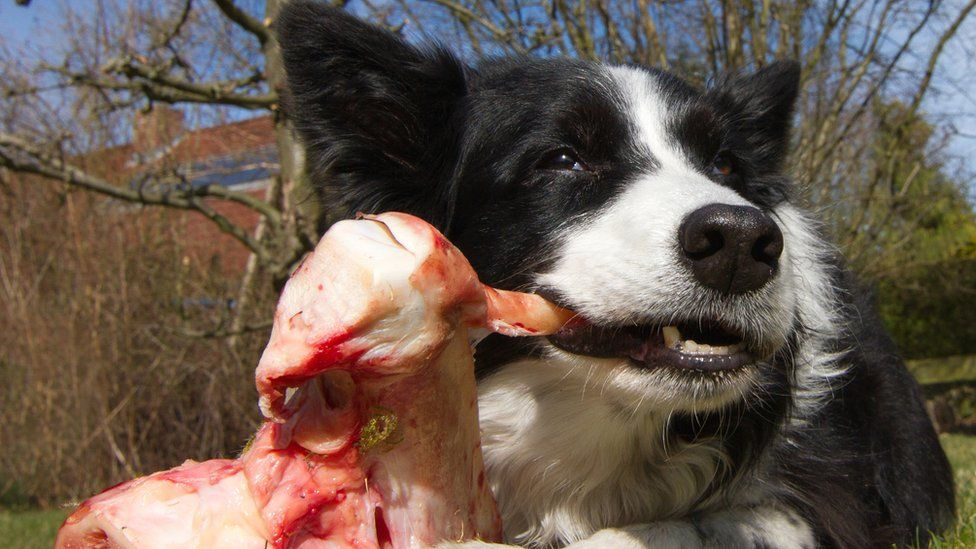Types of Raw Diet - How to Raw!
- infowoofster
- Feb 13, 2024
- 4 min read

When looking at raw diets it can be a bit of a mine field at first. You've got 80/10/10, Complete and DIY, but what's the difference and how should you feed them?
80/10/10
These diets contain 80% meat, 10% bone and 10% offal. Of this 10% offal there should be 5% liver. When feeding an 80/10/10 diet it's important to feed at least 5 different proteins as different proteins have different nutrients. For example duck is high in vitamin B3 and B6 but is high in fat. Fish is good for omega 3 but is lower in iron, but beef is good for iron. So you'd have to feed a variety to ensure good nutrition.
You could also add in a BARF supplement powder to ensure your pet is getting all the nutrients they need. We stock Leo and Wolf supplements in our store for cats and dogs.
Many people add salmon oil to this diet to add omega 3, which aids joints and a healthy shiny coat. Be careful when doing this though as salmon oil can become rancid.
Frozen berries (cranberries, blueberries and raspberries) are another good addition as they contain vitamin c and antioxidants. Never feed your dog grapes though as they can be highly toxic!
Raw egg including the shell is a good addition to your dogs diet a couple of times a week. Eggs are packed full of nutrients including:
Vitamin A
Riboflavin
Folate
Vitamin E
Iron
Selenium
Fatty Acids
Collagen
Chondroitin
Hyaluronic acid
Glucosamine
Complete minces
These are a good place to start if you're new to raw. It's by far the easiest way to ensure good nutrition. They contain your meat, bone and offal but also contain fruit, veg and oils to boost your dogs nutrition.
These are my personal favourite as you don't need to worry about adding anything unless you want to. You can simply thaw and serve. It's still advised to use a variety of proteins and rotate them to give your pet all the nutrients they need.
This option is usually quite expensive but you don't need to buy anything else to add to the diet unless you want too. Joint supplements are a popular additive, especially for larger breeds and older dogs. You can always add some egg as mentioned above.
DIY
As the name implies this is where you make up the diet yourself. People often use whole prey or buy bits and pieces individually. I personally would not recommend this method as it can cause health issues to your pet if you get it wrong. This is why most vets frown upon any DIY diet, raw or cooked.
People choose this option as it can be cheaper, but done properly it's very time consuming weighing out every ingredient and working out how much of each ingredient they need.
Taurine is essential for cats as they can't produce it themselves. Taurine deficiency can lead to central retinal degeneration (CRD), which casues sight loss. Taurine is also important for heart health. Deficiency can lead to dilated cardiomyopathy (DCM) a form of heart disease. This is an example of how a DIY diet may harm your pet if you get it wrong. Unfortunately these diseases can't be reversed.
Bones
Bones are the natural way dogs clean their teeth. Mine have a bone now and then. If you feed a bone you can get boneless minced to feed alongside so they don't get too much.
Always supervise your dog with a bone. If your dog is new to eating bones you may have to hold it for them and make sure they chew it. My idiot dog Pancakes tried to eat a turkey neck whole the first time she had one so you may have to teach your dog to chew!
Never feed cooked bones! They can splinter and cause internal injury and dogs cant digest them as well as raw bones, which can lead to blockages.
Be careful with weight baring bones such as beef marrow bones as they're a lot tougher and can brake your dogs teeth.
I'd advise to wait until your puppy has it's adult teeth (around 6 months) before introducing bones. Puppy teeth are fragile and can easily brake on a bone. There are plenty of safer chews for puppies. We have a selection in our shop.
Deer antlers are a good tool to clean your dogs teeth and they're long lasting. Deer antlers and other chews are available in our shop. Again supervise your dog with any chew and take it away if it becomes a choking hazard.

Things to look out for
Your pets faeces can tell you a lot about their diet. If your pets poo is crumbly it's an indication they've had too much bone. Yellow poop can indicate they've had too much fat. If it's ongoing it may be a sign of pancreatitis.
It's important to check through your raw mince before feeding it. Game can often contain pieces of shot and sometimes people find weird and wonderful things in the food from when the livestock ate something it shouldn't have. The good thing about raw is you can pick it out. Usually these items end up in kibble as no one takes them out.
How much to feed
No matter which type of raw diet you choose you should feed 2-3% of their bodyweight daily. For example a 20kg dog should have 400g a day. If they're active or underweight you can go up to 600g a day.
Cats should also be fed 2-3% of their bodyweight per day. An average 4kg cat should have 80g per day.

Comments